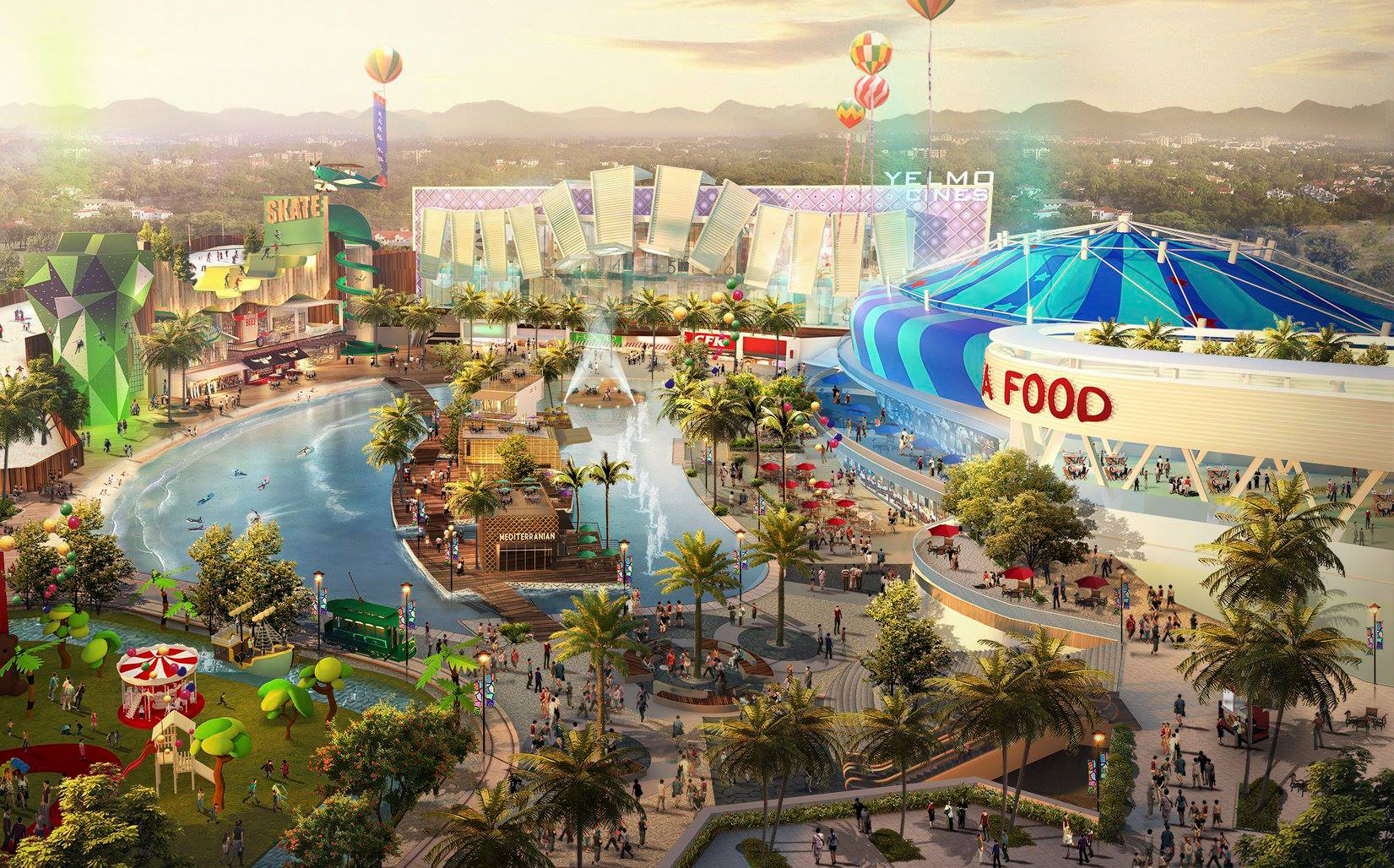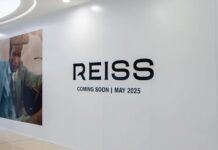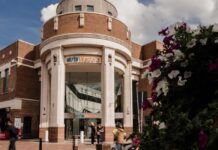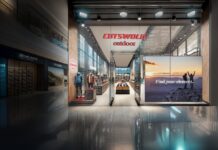Shopping centres of the future will be part of whole community developments, comprising residential, hotel, office space, retail and leisure.
30 October 2008: The date Westfield London opened its doors, marking the official arrival of the Westfield brand in the UK capital. Ten years on, the shopping centre has attracted more than half a billion visitors and generated over £16.7 billion in sales.
Unibail-Rodamco-Westfield has invested more than £4 billion in its London sites over the past decade and has a further £2 billion+ planned. There are good reasons why the shopping centre giant’s destinations continue to be catalysts for the development of ‘London’s Opportunity Areas’. Westfield London and Westfield Stratford City have made these areas around White City and the Olympic site more attractive places to visit, work, live and enjoy. The planned Croydon Westfield site – a 50 per cent joint venture partnership with Hammerson – will see a £5.4 billion planned investment in the area.
Changing with the times over the past decade has been the key to the success of the centres themselves, according to a recent report entitled ’10 Years in the Making’, which explores the social-economic impact of Unibail-Rodamco-Westfield centres in London. The centres have created retail, leisure and entertainment destinations that span beyond the traditional shopping centre offering. This also includes enhancing the mixed-use natures of the company’s sites, which feature approximately 67,354 sq m of office space. Residential also has a valuable role to play; Unibail-Rodamco-Westfield has plans for close to 4,000 new homes across the capital, including affordable housing.
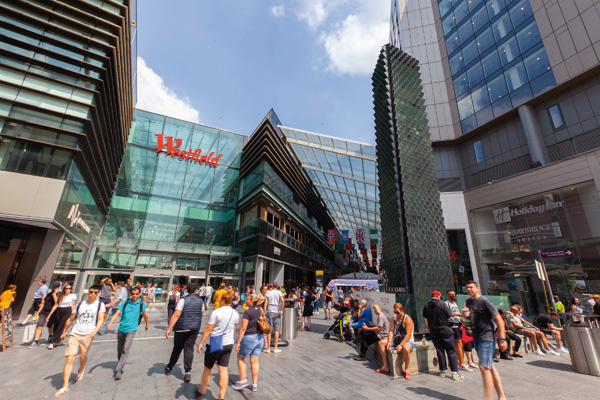
Westfield Stratford City has attracted 50 million visitors in the last year. The popular East London destination has now welcomed more than 323 million visitors since its opening in 2011, generating retail sales of more than £7.4 billion. ‘Expectations for future growth are very strong with an estimated £22 billion to be invested by 2027 bringing more retail, homes and offices, as well as cultural and learning institutions to the area,’ says Michel Dessolain, COO Europe for Unibail-Rodamco-Westfield.
Liverpool ONE also celebrated a decade of success this year. Grosvenor Europe, developer, co-owner and asset manager of the shopping centre, has marked the 10th anniversary with a publication of analysis of Liverpool ONE’s socio-economic impact. As well its contributions to the local economy, Grosvenor has donated £2 million to the community via the Liverpool ONE Foundation, an enterprise set up before the development opened to provide support to community projects across the city region.
‘Liverpool ONE has just celebrated its 10th anniversary and we have reviewed how the destination has contributed to the growth of the city, economically, but also by providing support to the local community. We want to continue the good work we have done in terms of updating the offer to suit changing consumer demands and to attract people to use Liverpool ONE as a place to meet people, engage and interact, so we already have an extensive enlivenment programme planned for 2019, in addition to looking at investing in the public realm space and retail offer for visitors,’ says Miles Dunnett, director of portfolio management at Grosvenor Europe.
Many new stores and retail concepts have launched at Liverpool ONE in 2018 including one of the largest Footlocker stores globally, followed by flagship locations for COS and & Other Stories. The F&B mix has also grown with the launch of a brand new bar concept, Aether, from the team behind The Alchemist. ‘This is already proving popular and visitors are enjoying Liverpool ONE long into the evening too,’ says Dunnett.
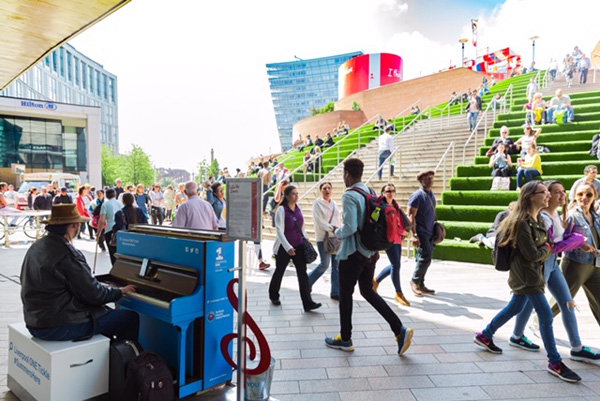
‘The role of the shopping centre has changed significantly over the past 10 years and the next 10 years will be no exception. However, as we have seen with the ongoing success of Liverpool ONE, it is possible to be flexible and adapt to changing consumer requirements to ensure centres remain relevant. For example, introducing dining and leisure, and creating a warm place for people to meet and interact such as Chavasse Park at Liverpool ONE, are a real point of difference for us,’ continues Dunnett.
Liverpool ONE is a city centre destination, already making it a more unique format than a traditional shopping centre or mall, and serves an urban and civic role as well as providing somewhere to shop. This is reflective of the type of shopping centres found elsewhere in Grosvenor’s retail portfolio, such as in Stockholm, and this will become increasingly important. ‘Delivering a constantly engaging and relevant offer for a wide range of purposes can be difficult to get right, however by considering three core channels – economy, community and the environment – and by using the destination to connect people and communities in a meaningful way, Grosvenor can continue to offer an appealing destination which is sustainable, embraces new technologies and delivers an innovative retail offer,’ he says.
Centre:mk’s joint owners, Hermes Investment Management and AustralianSuper, recently commissioned strategic foresight consultancy The Future Laboratory to explore the trends that will shape retail in the next decade, resulting in the ‘Future Shopper Report’.
Kathryn Bishop, deputy foresight editor at The Future Laboratory, said the company identified three emerging and significant areas of growth when putting together the report:
Community-builders: retail spaces that connect like-minded shoppers through events and services beyond the hard sell via platforms that offer support, advice, play and experimentation.
Hero-hunters: future consumers will actively seek destination retail spaces that are trustworthy, and demonstrate an enhanced level of understanding and care for the surrounding community, local businesses and organisations.
Service Synergists: retail staff will become ultimate brand ambassadors by creating deeper, trusted connections with consumers using heightened knowledge, emotional intelligence (EQ) and creativity to curate and personalise future shopping experiences.
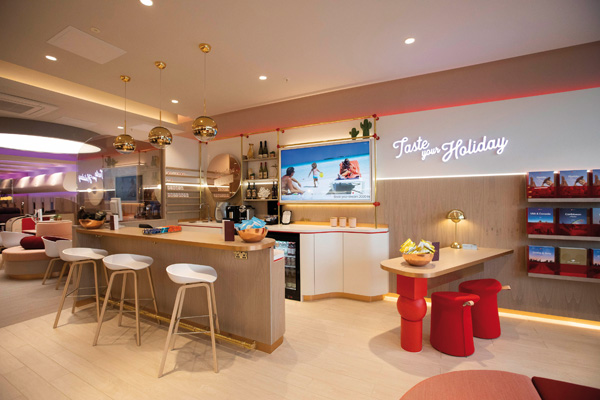
‘Consumers want places that are fun to go to, that are vibrant, community orientated, with programming, personal service, with knowledge from the shop assistants who are running their sections and able to help,’ says Bishop.
She sees shopping centres of the future as an escape from the digital world, and a large part of this will be down to programming, whether its lifestyle workshops, live music or communal events. ‘Communication is so important today, in a world where people spend an average of six hours per day in front of a screen,’ says Bishop.
She notes research by Gensler, which revealed 94 per cent of visitors to public spaces undertake multiple activities when they are there. ‘Increasingly, retail spaces are public spaces. People go there to grab a coffee, catch up with friends, they may go and see an exhibition, do some shopping and get an experience or do a bit of people watching. We have to think about who is coming and what they are doing there,’ says Bishop. ‘I think we’ll see increasingly modular fit-outs in retail destinations; the ability to have a space that can create different destinations throughout the day such as cookery classes, classes for new mums, then onto a stage in the afternoon for performances.’
Of course, we can’t discuss shopping centres without mentioning food and drink outlets. ‘Two thirds of Millenials eat out at least once a week; twice the number as Baby Boomers. Even Gen Z who are quite money conscious are eating out – 40-50 per cent of them once a week – and they are looking for healthy options and options that are kind of indulgent but still made with quality ingredients, and we’ll see an increase in vegan dining,’ continues Bishop. ‘People want immersive food experiences, so when you do go out you can learn about that product or have your own chance at making it.’ She notes Fico Eataly World in Bologna, Italy as a great example: ‘It’s all about Italian eating and Italian food with almost museum-like experiences, and there’s also a shopping mall at the end where you can test all the ingredients or have all the mains at the bar and drink a glass of Prosecco. It’s a joined up process.’
Technology is also a key player in the F&B sector, for example, there are KFCs in China where you can smile and pay for your dinner through digital recognition. And the likes of Amazon’s Just Walk Out technology and similar, of course, allowing customers to grab a Starbucks coffee on the go whilst walking around shopping centres. ‘On one hand there will be this experiential aspect where you’re learning and being taught about cultures, and on the other hand this need for speed and quickness,’ says Bishop.
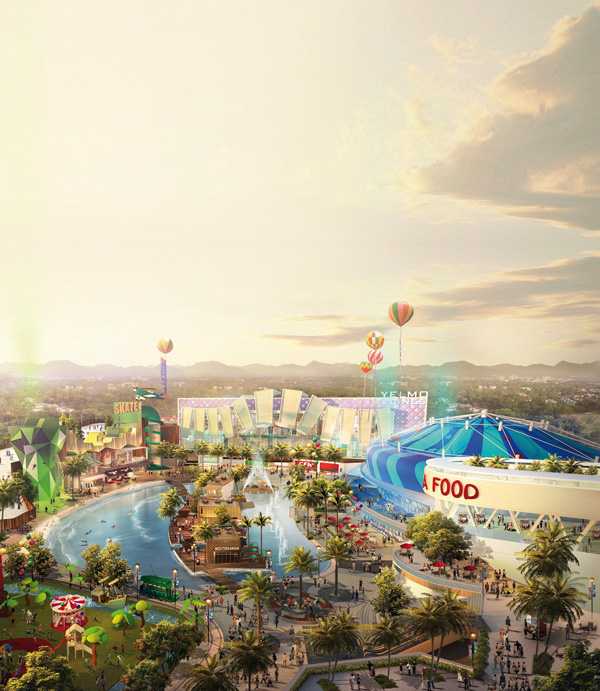
intu currently has two major developments underway, the 16,258 sq m retail and leisure development at intu Lakeside and its £75 million enhancement of Barton Square at intu Trafford Centre. intu has also recently opened its 37,161 sq m development at intu Watford which has, according to CACI, elevated the town to a top 20 retail destination alongside Edinburgh and Bristol. The growing appeal of the centre will increase its potential catchment population from 1.6 million to 2.8 million, making it the number one choice for even more shoppers. Retailers and operators will also reap the benefits of a 47 per cent increase in market potential and a 73 per cent increase in comparison goods expenditure (CACI 2017 report on intu Watford).
‘At intu Lakeside we’ve invested £72 million to create a game-changing leisure-led development, which will transform the centre into the UK’s leading retail resort when it opens next year, enticing even more customers from further afield and enabling tenants to generate even greater results. Nickelodeon’s first-ever UK shopping attraction and hi-tech mini golf operator Puttshack will launch there alongside Hollywood Bowl, Flip Out and 10 new restaurants,’ says Martin Breeden, development director for intu.
The centre continues to attract new brands including Jack Wills and Mitsubishi Motors and has seen significant investment from existing brands including Zara and River Island who have tripled their store space to create flagship stores.
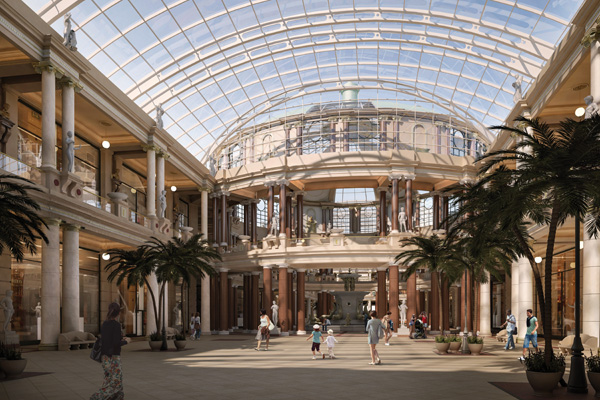
At intu Trafford Centre, the centre has attracted customers from across the world as well as an increasing number of international retailers including Abercombie & Fitch. ‘Our investment to enhance Barton Square at intu Trafford Centre includes a redesigned interior and a glass-domed roof. Existing anchor tenants including SEA LIFE Manchester, LEGOLAND Discovery Centre and Next Home, will sit alongside a new Primark which will open when the project completes in early 2020,’ says Breedon.
‘Work on developments at intu Broadmarsh and intu Costa Del Sol will commence in 2019, and intu has recently announced it is looking at opportunities within its portfolio for alternative uses of available land including residential, hotel, office, flexible working and other uses. Initial work has highlighted the potential for around 5,000 residential units and nearly 600 hotel rooms, with further opportunities under active consideration. All of these would both create value directly but also increase the overall attractiveness and catchment of intu’s centres.
intu’s work at intu Costa Del Sol provides an insight into the developer’s vision for the shopping centre of the future. ‘We’re taking everything we’ve learned so far to a whole new level with leisure attractions including open-air skiing, theme park attractions, an aquarium, along with a hotel, conference centre and creative retail units. There’s already been widespread interest from both Spanish and international operators who want to be a part of this redefined shopping experience. So, the shopping centre of the future is ultimately about making the physical shopping experience as compelling as possible by understanding the shopping centre environment and customers’ increasing demand for a seamless shopping experience. Due to the changing nature of this environment, we’re constantly developing spaces to create better and more relevant experiences, focusing on great quality design, attention to detail and customer engagement; creating a family-friendly day out destination that delivers retail, leisure and dining all under one roof,’ says Breedon.
intu is continuing to create destinations where customers can eat, shop, play and relax all under one roof. ‘We’re welcoming an increasing amount of leisure brands across our portfolio including climbing operator Rock Up and new bar and restaurant, The Florist at intu Watford, which is a third retail, a third leisure and a third dining. The combination of this offer encourages even more customers to visit which in turn helps all retailers deliver stronger results. A great example is seen at intu Derby; since the new leisure units opened in 2016, they have helped evening footfall (after 5pm) increase by over 25 per cent,’ notes Breedon.
What centre:mk’s Future Shopper Report confirms is that understanding what is driving consumers, through a mix of data and direct interaction, will be critical to the success of destination retail spaces, enalbing them to curate an overall experience that meets the needs and desires of future shoppers. Landlords will need to work alongside brands and business owners to create community-centric hubs where empathy, human connections, personalisation and escapism are front and centre.
Author: Lyndsey Dennis, Retail Focus.
